

The great outdoors is rarely greater than in Europe's big north. Epic expanses of wilderness – forests, lakes, volcanoes – and intoxicatingly pure air mean engaging with nature is a viscerally pleasurable experience. National parks cover the region, offering some of Europe's best hiking as well as anything from kayaking to glacier-walking to bear-watching. Spectacular coasts invite exploration from the sea, whether there be rugged fjords, cliffs teeming with seabirds or archipelagos so speckled with islands it looks like an artist flicked a paintbrush at a canvas. Wildlife from whales to wolverines awaits the fortunate observer.
Stolid Nordic stereotypes dissolve in the region's vibrant capitals. Crest-of-the-wave design can be seen in them all, backed by outstanding modern architecture, excellent museums, imaginative solutions for 21st-century urban living, internationally acclaimed restaurants and a nightlife that fizzes along despite hefty beer prices. Live music is a given: you're bound to come across some inspiring local act, whether your taste is Viking metal or chamber music. Style here manages to be conservative and innovative at the same time, or perhaps it's just that the new and the old blend with less effort than elsewhere.
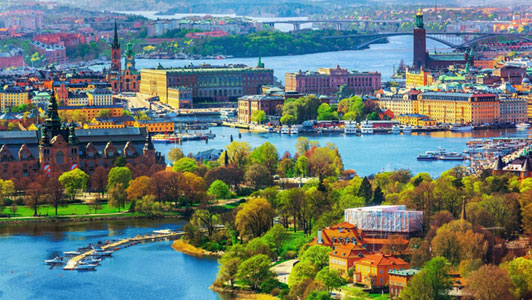
Finland
Finland is a Northern European nation bordering Sweden, Norway and Russia. Its capital, Helsinki, occupies a peninsula and surrounding islands in the Baltic Sea. Helsinki is home to the 18th-century sea fortress Suomenlinna, the fashionable Design District and diverse museums. The Northern Lights can be seen from the country's Arctic Lapland province, a vast wilderness with national parks and ski resorts.
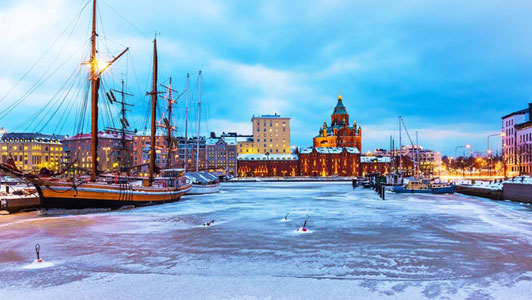
Helsinki
Helsinki, Finland’s southern capital, sits on a peninsula in the Gulf of Finland. Its central avenue, Mannerheimintie, is flanked by institutions including the National Museum, tracing Finnish history from the Stone Age to the present. Also on Mannerheimintie are the imposing Parliament House and Kiasma, a contemporary art museum. Ornate red-brick Uspenski Cathedral overlooks a harbor.
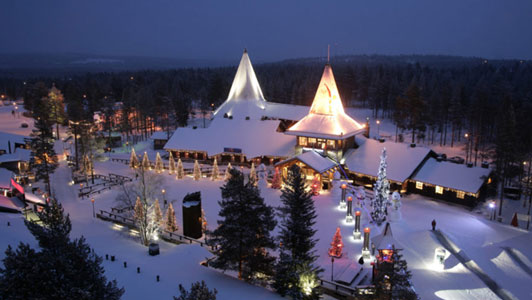
Rovaniemi
Rovaniemi is the capital of Lapland, in northern Finland. Almost totally destroyed during World War II, today it’s a modern city known for being the "official" home town of Santa Claus, and for viewing the Northern Lights. It’s home to Arktikum, a museum and science center exploring the Arctic region and the history of Finnish Lapland. The Science Centre Pilke features interactive exhibits on northern forests.
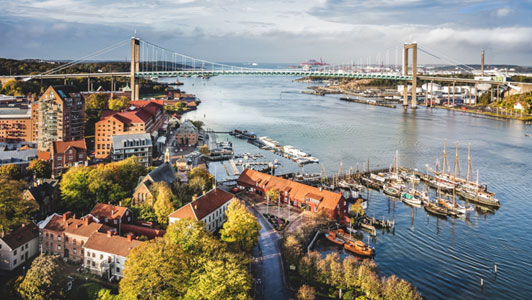
Sweden
Sweden is a Scandinavian nation with thousands of coastal islands and inland lakes, along with vast boreal forests and glaciated mountains. Its principal cities, eastern capital Stockholm and southwestern Gothenburg and Malmö, are all coastal. Stockholm is built on 14 islands. It has more than 50 bridges, as well as the medieval old town, Gamla Stan, royal palaces and museums such as open-air Skansen.

Stockholm
The beautiful Swedish capital prides itself on being open to anyone and everyone. A curious city, eager to try anything that is new, anything that’s different.!
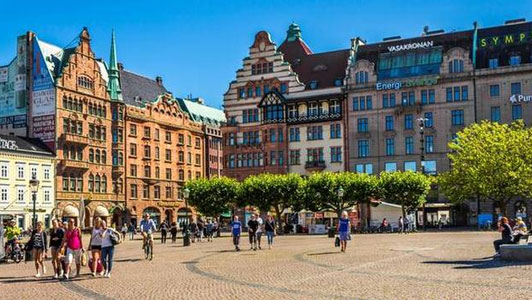
Malmo
Malmo is a coastal city in southern Sweden. It lies at the eastern end of the striking Öresund Bridge, a long road and railway bridge–tunnel running to Copenhagen, Denmark. In the city center, Lilla Torg is a cobblestone square with cafes, half-timbered houses and shops selling local handicrafts. Malmö Castle, a 16th-century fortress built by King Christian III of Denmark, houses nature, history and art exhibits.

Norway
Norway is a Scandinavian country encompassing mountains, glaciers and deep coastal fjords. Oslo, the capital, is a city of green spaces and museums. Preserved 9th-century Viking ships are displayed at Oslo’s Viking Ship Museum. Bergen, with colorful wooden houses, is the starting point for cruises to the dramatic Sognefjord. Norway is also known for fishing, hiking and skiing, notably at Lillehammer’s Olympic resort.
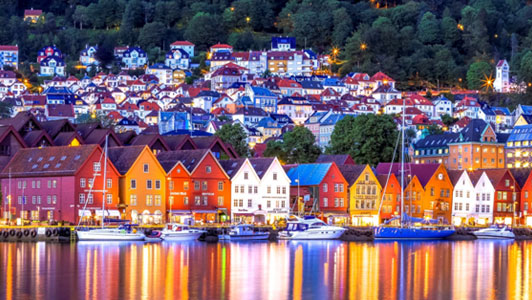
Bergen
Bergen is a city on Norway’s southwestern coast. It's surrounded by mountains and fjords, including Sognefjord, the country’s longest and deepest. Bryggen features colorful wooden houses on the old wharf, once a center of the Hanseatic League's trading empire. The Fløibanen Funicular goes up Fløyen Mountain for panoramic views and hiking trails. The Edvard Grieg House is where the renowned composer once lived.

Oslo
Oslo, the capital of Norway, sits on the country’s southern coast at the head of the Oslofjord. It’s known for its green spaces and museums. Many of these are on the Bygdøy Peninsula, including the waterside Norwegian Maritime Museum and the Viking Ship Museum, with Viking ships from the 9th century. The Holmenkollbakken is a ski-jumping hill with panoramic views of the fjord. It also has a ski museum.
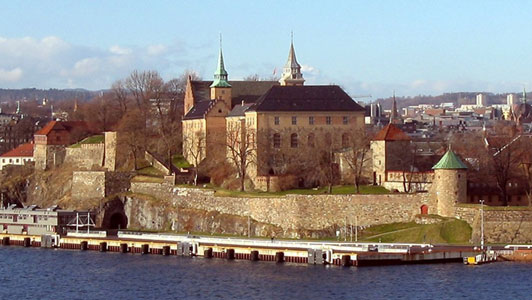
Akershus Fortress
Akershus Fortress or Akershus Castle is a medieval castle that was built to protect and provide a royal residence for Oslo, the capital of Norway. The castle has also been used as a military base, a prison and government offices.
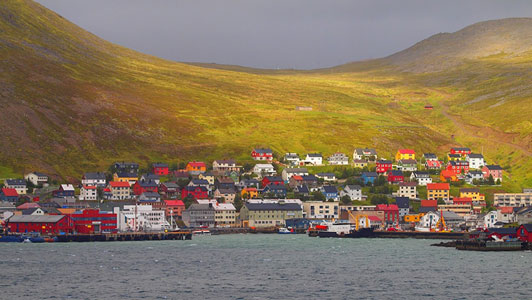
Honningsvag
Honningsvåg is the northernmost city in Norway. It is located in Nordkapp Municipality in Finnmark county

Flam
Flam is a village in southwestern Norway, in an area known for its fjords. It sits at the end of Aurlandsfjord, a branch of the vast Sognefjord. The dramatic Stegastein viewing platform juts out high above the Aurlandsfjord. South of Flåm Harbor, the 17th-century wooden Flåm Church lies in the valley. The Flåm Railway offers valley and waterfall views as it climbs to a station on the Hardangervidda plateau.

Tromso
Tromso, a city in northern Norway, is a major cultural hub above the Arctic Circle. It’s famed as a viewing point for colorful Northern Lights that sometime light up the nighttime sky. The city’s historic center, on the island of Tromso, is distinguished by its centuries-old wooden houses. The 1965 Arctic Cathedral, with its distinctive peaked roof and soaring stained-glass windows, dominates the skyline.
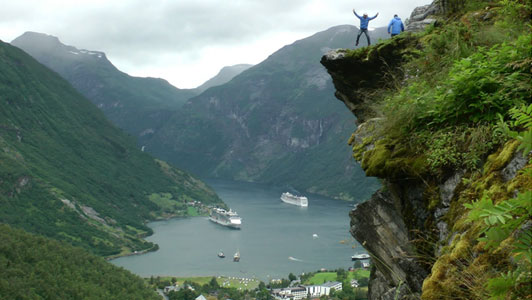
Geiranger
Geiranger is a village in western Norway, at the head of Geirangerfjord. The Norwegian Fjord Center has multimedia on the history of the region and its inhabitants. Part of the steep Trollstigen mountain road weaves through the village, connecting to Flydalsjuvet lookout, which has views over the fjord. The fjord’s waterfalls, including the Seven Sisters, the Suitor and the Bridal Veil, are visible by boat.

Alesund
Alesund is a port town on the west coast of Norway, at the entrance to the Geirangerfjord. It’s known for the art nouveau architectural style in which most of the town was rebuilt after a fire in 1904, as documented at the Jugendstilsenteret museum. There are panoramic views of Ålesund’s architecture, the surrounding archipelago and fjords from the Mount Aksla lookout.
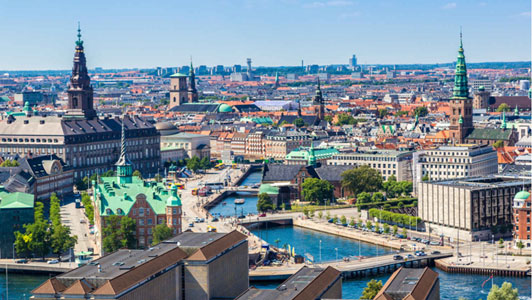
Denmark
Denmark is a Scandinavian country comprising the Jutland Peninsula and numerous islands. It's linked to nearby Sweden via the Oresund bridge. Copenhagen, its capital, is home to royal palaces and colorful Nyhavn harbor, plus the Tivoli amusement park and the iconic “Little Mermaid” statue. Odense is writer Hans Christian Andersen’s hometown, with a medieval core of cobbled streets and half-timbered houses.
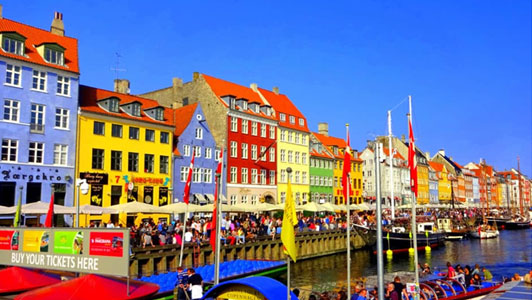
Copenhagen
Copenhagen, Denmark’s capital, sits on the coastal islands of Zealand and Amager. It’s linked to Malmo in southern Sweden by the Oresund Bridge. Indre By, the city's historic center, contains Frederiksstaden, an 18th-century rococo district, home to the royal family’s Amalienborg Palace. Nearby is Christiansborg Palace and the Renaissance-era Rosenborg Castle, surrounded by gardens and home to the crown jewels.
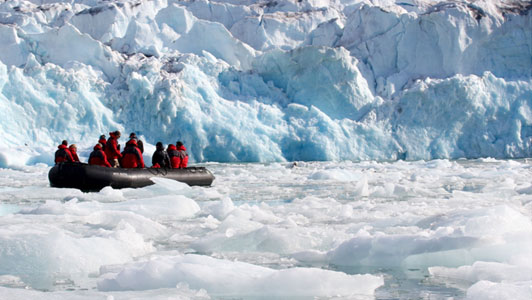
Svalbard
Svalbard is a Norwegian archipelago between mainland Norway and the North Pole. One of the world’s northernmost inhabited areas, it's known for its rugged, remote terrain of glaciers and frozen tundra sheltering polar bears, Svalbard reindeer and Arctic foxes. The Northern Lights are visible during winter, and summer brings the “midnight sun”—sunlight 24 hours a day.
